
National Center on Elder Abuse


National Center on Elder Abuse
If you have a reasonable suspicion that abuse or neglect has been or is being committed, contact the appropriate authority referenced below. You do not need proof of confirmed maltreatment to make a report. Professionals will investigate suspected claims of elder mistreatment.
If you or someone you know is in immediate danger, call 911.
If the danger is not imminent, report abuse in the community to the local Adult Protective Services (APS) agency. In many states, APS is the reporting agency for suspected abuse in long-term care facilities. Find the APS reporting number for your area.
Suspected abuse in long-term care facilities should be reported to your state licensing agency. In some states, reports of abuse in facilities can be made to APS. Long-term care facilities include nursing homes, assisted living centers, and board and care facilities. Find the Long-Term Care Ombudsman contact number for your area.
Eldercare Locator provides access to find local reporting resources. Call 1-800-677-1116. Language interpretation is available.
Adult Protective Services (APS) investigates allegations of elder maltreatment. They help facilitate the safety and wellbeing of older adults and adults with disabilities who experience abuse, neglect, and/or financial exploitation. APS develops care plans and helps to coordinate medical, social, financial, legal, and other emergency or supportive services with the individual experiencing or exposed to abuse.
Each state has an APS office. Client eligibility and available resources differ by state and program.
Generally, individuals who have experienced abuse must consent to APS services. in most instances older people may decide to decline APS assistance. Under certain circumstances, APS may provide protective assistance to individuals who appear to be unable to make or communicate a decision to accept or decline services or who require immediate intervention.
To find an APS agency in your area, visit the National Adult Protective Services Association (NAPSA).
For information about what you can expect after reporting to APS, access the following NCEA fact sheets:
For additional information about APS services, visit the National Adult Protective Services Association website and the Adult Protective Services Technical Assistance Resource Center Website (APS TARC).
You can visit the NCEA’s Publications Page for more information about APS.
Long-Term Care Ombudsmen serve as advocates for residents in long-term care facilities. With resident consent, they investigate allegations of abuse, help resolve complaints, protect resident rights, and work to improve the quality of life for long-term care residents.
Ombudsmen support and maximize resident participation by providing residents the opportunity to discuss complaints with confidentiality. They elicit resident preferences and wishes, advise residents of their rights, and work with residents to develop a plan of action for complaint resolution.
Informed consent is required from the resident or resident’s representative to investigate the complaint and disclose information to the facility and/or outside agencies.
To find a Long-Term Care Ombudsman in your area, visit the National Consumer Voice for Quality Long-Term Care.
For additional information about Long-Term Care Ombudsman services, visit the National Consumer Voice for Quality Long-Term Care.
You can also visit the NCEA’s Publications Page for fact sheets regarding ombudsman services.
In addition to Adult Protective Services and the Long-Term Care Ombudsman, if you suspect financial fraud and scams, report to the following:
Other reporting agencies may be located at USA.gov.
If you have questions about elder abuse or need support, contact the following:
Legal interventions include both civil and criminal remedies. Civil legal relief can include explanations of your legal rights, assistance with drafting powers of attorney, support with recovering exploited assets, and assistance with preparing petitions for restraining orders and guardianships. Criminal legal remedies include the prosecution of cases of elder mistreatment.
To locate an attorney in your area, you can contact:
Courts
Courts play a critical role in protecting the rights and the safety of older adults and people with disabilities. Elder abuse may arise within several judicial contexts, including criminal, probate, civil, general jurisdiction, and tribal courts. Some courts have led the charge in community responses to elder abuse and have piloted models to better serve older people.
For more information on elder abuse and the courts, visit:
Multidisciplinary Teams (MDTs) bring together professionals from different disciplines to review complex cases of elder abuse and identify solutions. Cases brought to MDTs often require the expertise and response of multiple agencies. MDTs offer advice, connection to resources, and direct assistance. The professionals most commonly participating in MDTs are APS, law enforcement, case managers, medical providers, mental health services, prosecutors, and victim advocates. Teams may also include the public guardian, social service providers, civil attorneys, psychologists, physicians, and financial experts. Teams vary based upon community needs and resources.
Types of MDTs include:
Some MDTs have Service Advocates or Elder Advocates who help older adults with safety planning and case management.
For more information on MDTs, access the NCEA’s Issue Brief: Multidisciplinary Teams
To locate an MDT in your area and for resources, visit the Multidisciplinary Team Technical Assistance Center
Elder shelters provide safe, short-term housing, and social support for older adults who have been mistreated.
For general information about shelters, visit the Spring Alliance
Mandatory reporters are professionals who are designated by state statute to report incidents of suspected elder mistreatment to reporting agencies, including APS. Most states, but not all, have mandatory reporting laws. Mandatory reporters may include healthcare professionals, social service providers, caregivers, clergy, and financial institutions, among others.
For your state's statute on mandated reporting, visit the Elder Abuse Guide for Law Enforcement.
Screening
Screening instruments are standardized protocols that assist providers in identifying signs of abuse or the risk factors that may predict an increased likelihood of mistreatment.
Several assessment tools have been developed for use in health care and social service settings to identify at-risk elders or cases of elder mistreatment. Tools must be tailored to the type of abuse, the setting, the population, and utilized in combination with observation and expert evaluation.
While the US Preventive Services Task Force finds insufficient evidence to recommend screening, expert consensus endorses routine screening in clinical settings. The American Medical Association recommends screening all patients over the age of 65 for abuse and neglect.
Several tools have been tested and some validated, but there is no gold standard that definitively detects the presence or absence of abuse.
A reference standard may be difficult to achieve given the various forms of abuse, differing legal definitions of abuse, the range of clinical settings and patient conditions, and the overlap of signs of abuse with markers of disease.
Another factor to consider with screening tools is that existing instruments may purport to detect the presence or absence of EM rather than the change in status over time through a severity construct, inhibiting accurate outcome measurement. Validity testing of instruments is needed, particularly within different cultural contexts, across diverse patient and professional settings.
Please see the following resources regarding screening tools:
Documentation
It is best practice for professionals to document suspicions and signs of abuse. This may include behavioral changes, physical markers, and financial inconsistencies. Please see the following non-exclusive list of instructive documentation tools:
Last Modified: 12/26/2023